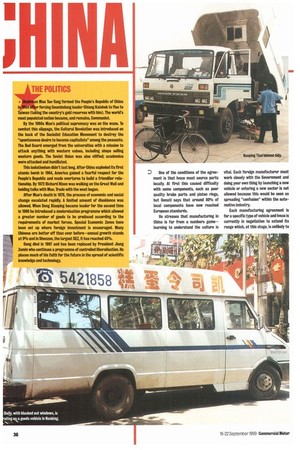POLITICS
Page 40

If you've noticed an error in this article please click here to report it so we can fix it.
Mao Tse-Tung formed the People's Republic of China r forcing Goumindang leader Chiang Kaishek to flee to Taiwan (taking the country's gold reserves with him). The world's most populated nation became, and remains, Communist.
By the 1960s Mao's political supremacy was on the wane. To combat this slippage, the Cultural Revolution was introduced on the back of the Socialist Education Movement to destroy the "spontaneous desire to become capitalists" among the peasants. The Red Guard emerged from the universities with a mission to attack anything with western values, including shops selling western goods. The Soviet Union was also vilified: academics were attacked and humiliated.
This isolationism didn't last long. After China exploded its first atomic bomb in 1964, America gained a fearful respect for the People's Republic and made overtures to build a friendlier relationship. By 1972 Richard Nixon was walking on the Great Wall and holding talks with Mao. Trade with the west began.
After Mao's death in 1976, the process of economic and social change escalated rapidly. A Knitted amount of dissidence was allowed. When Deng Xiaoping became leader for the second time in 1980 he introduced a modernisation programme which allowed a greater number of goods to be produced according to the requirements of market forces. Special Economic Zones have been set up where foreign investment is encouraged. Many Chinese are better off than ever before—annual growth stands at 9% and in Shenzen, the largest SEZ, it has reached 45%.
Deng died in 1997 and has been replaced by President Jiang Zemin who continues a programme of controlled liberalisation. lie places much of his faith for the future in the spread of scientific knowledge and technology.










































































































